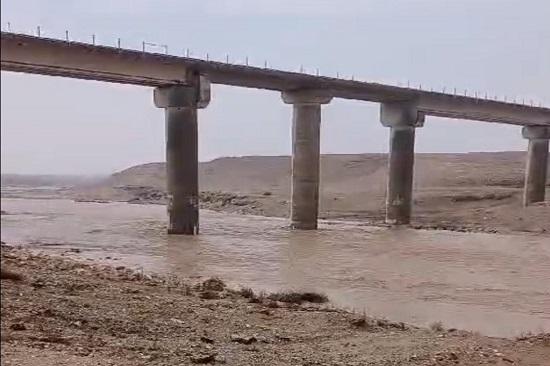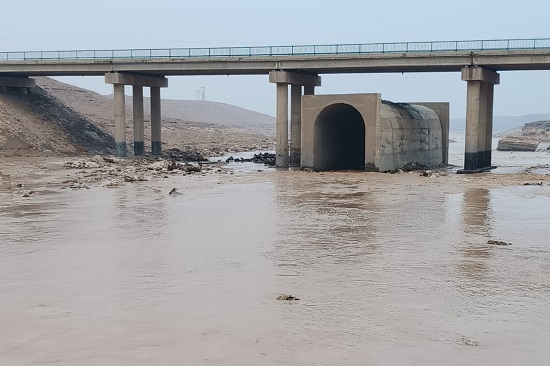| News Details |
Statistics of rain wave and runoff events in the Upper Euphrates region
2024-02-15

The Planning and Databases Department at the Upper Euphrates Basin Developing Centre - University of Anbar announced the most important statistics on the wave of rain and runoff events in the Upper Euphrates region.
Dr. Atheer Salim Obaid stated that the amount of rain recorded at the Centre’s station within the campus of the University of Anbar reached (9mm) on 14-2-2024, while it recorded (1.6mm) on 15-2-2024. As for the terminal station in Haditha, it recorded (44) mm within two days, which is a good number and led to flooding in most nearby valleys.
The highest rainfall recorded in Haditha during the same period of the year, i.e. the month of February, amounted to (116 mm) recorded in 1995 and the amount of rain recorded (98.8 mm) in February 1980.
As for the floods, Engineer Juma’a Mohamed Ahmed confirmed that over the course of two days February 14,15, the terminal station’s staff in Haditha was able to monitor and record runoff events in the valleys of Horan, Hajlan, Zaghdan, Banat Al-Hassan and Benyadha, He also added that the highest discharge was recorded in Valley Hajlan on Wednesday, February 14, amounting to (22.5) cubic meters / second, while in Valley Banat Al-Hassan recorded discharge of (7.5) cubic meters / second, while the highest discharge was recorded in Valley Zaghdan at the Centre station built on the Zaghdan bridge near the road between Ramadi and Haditha and amounted to (90) cubic meters / second. In Valley Horan, a discharge of (6.4) cubic meters / second was recorded at the Centre station on the valley near the Ramadi-Haditha road, recorded at 8:30 am on Thursday, February 15.
Subsequent bulletins on the amounts of water and rain will be issued in detail. It is worth noting that the Upper Euphrates Basin Developing Centre – University of Anbar, within its programs and plans to monitor and study climate change, has established monitoring stations on a number of valleys in the region for the purpose of building solid and continuous databases to support researchers and postgraduate students in the field of climate research within the university's strategic plans to achieve sustainable development goals and Vision 2030.
To view the videos of the floods in the valleys of the upper Euphrates regions on February 14, 15, 2024, please follow the following tips:










